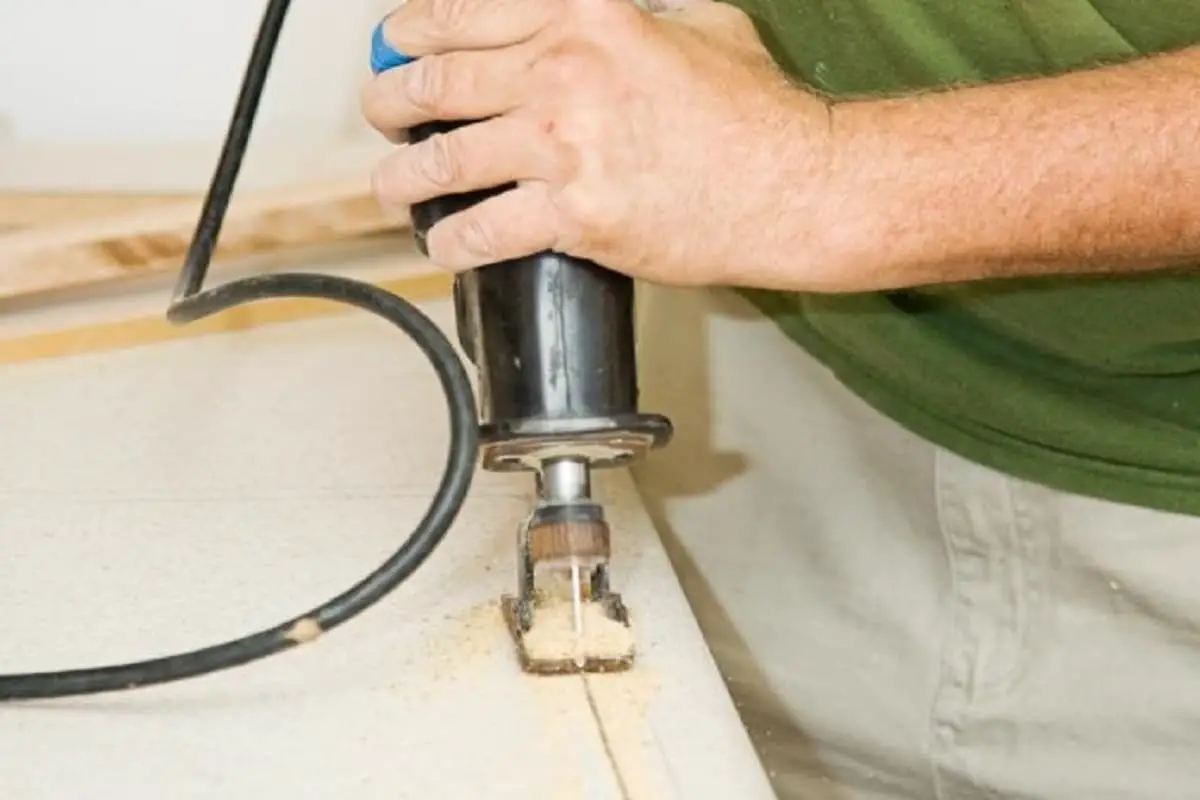Power tools are loud, and reciprocating saws are no exception. But how loud are they? Find out in this post.
Reciprocating Saw Noise
What do reciprocating saws sound like? This is not easy to describe, but they sound similar to a large toy electric train, but much louder. This is because of the back and forth motion of the blade and the powerful electric motor.
When a reciprocating saw cuts materials, the sound changes and the noise level can increase dramatically. This is especially true for harder materials, such as metal, concrete, or stone.
How Loud Is A Reciprocating Saw
Reciprocating saws produce sound in the range of 90-110 decibels. However, this also depends on which type of material they are cutting.
Reciprocating saws can be loud, especially when cutting metal. The louder the material, the louder they will be. That being said, from a decibel meter, one reciprocating saw is about 93 dB when it’s faced with bamboo and 101 dB when cutting metal.
According to OSHA, the time limit of exposure to a reciprocating saw without wearing hearing protection is between 30 minutes and 8 hours. This means using a reciprocating saw could cause long-term hearing damage if used all day.
A construction worker or house flipper who uses a reciprocating saw over an 8-hour shift should wear ear muffs or plugs.

Reciprocating Saw Hearing Protection
Reciprocating saws are loud, so wearing hearing protection while using them is highly recommended. Two types of hearing protection can be worn:
- Ear muffs
- Ear plugs
When shopping for ear muffs or plugs, make sure they are rate for NRR 25-37 dB.
Ear muffs or plugs can become uncomfortable if worn for long periods of time. It may be tempting to take them off and keep using the reciprocating saw. Just remember that time exposure to the loud noise will add up quickly and can hurt your ears. Try taking breaks from working if you feel you need to take them off.
Recommended Hearing Protection – Ear Muffs
3M H10A Peltor Optime 105 Over the Head Earmuff, Hearing Protection, NRR 30 dB
Professional Safety Ear Muffs by Decibel Defense – 37dB NRR
ProCase Noise Reduction Safety Ear Muffs, NRR 28dB Noise Sound Protection Headphones
Making A Reciprocating Saw Quieter
Reciprocating saws are loud, however not as loud as most other power tools. If you are looking to purchase a reciprocating saw make sure you look for one with some sort of noise reduction technology.
The longer the blade is on your recipricating saw the louder it will be. Short blades tend to be quieter than long ones. Less powerful reciprocating saws will also be generally quieter.
Try to use a reciprocating saw within a garage, workshop, or wide open area away from close neighbors. This also applies to using other power tools, such as chainsaws or circuluar saws.
It may not be possible to lower the sound level of a reciprocating saw when cutting metal or stone. You may just need to wear hearing protection and alert those around you.
In Closing
Reciprocating saws, like other power tools, make noise that can annoy the neighbors and damage the user’s ears. Along with eye and hand protection, wearing ear protection is highly recommended when using this tool.

